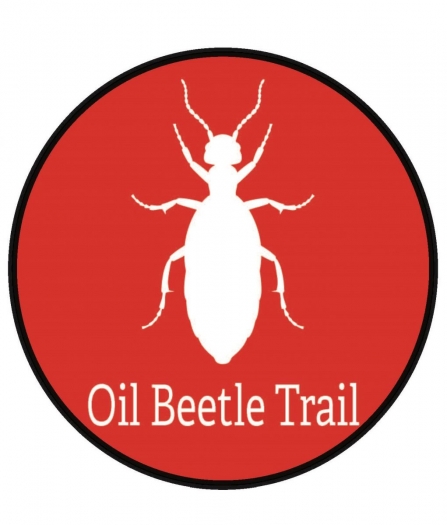
Welcome to the Oil Beetle Trail!
Meet the first of our miniature monsters of Highgate Common, the Oil Beetle!

Board 1: The Oil Beetle
Chunky, flightless beetles, the larger females of which can be up to 30mm in length. Look for them between March and June feeding on grasses.They get their name from the oily liquid they produce when threatened. Find out more
How to identify: Bulky beetles with bulbous abdomens, large flat heads and a metallic sheen.
Did you know? Oil beetle larvae live in bee colonies, feeding on the young, nectar and pollen stored there. To find one, the larvae wait on flowers and hitch a ride on a passing bee.
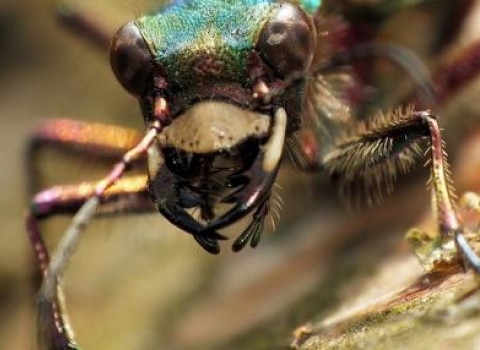
Board Two: The Green Tiger Beetle
A common ground beetle of heathland, moorland, sandy grassland and sand dunes, the green tiger beetle is a fast, agile hunter, running across the ground to catch its invertebrate prey, including spiders, caterpillars and ants. Find out more
How to identify: A large, metallic-green beetle, with purple-bronze legs and eyes, and large creamy spots on the wing cases.
Did you know: They are one of our fastest beetles, with a ferocious set of jaws and long legs that give it its impressive turn of speed.

Board 2: The Wingless Wasp
Found between June and September, the wingless wasp lives in Highgate's sand pits. Find out more here
How to identify: A black head and mesosoma, red legs.
Did you know: They are parasitic on the larvee of tiger beetles. Females sting the larvee, before laying their eggs in it.
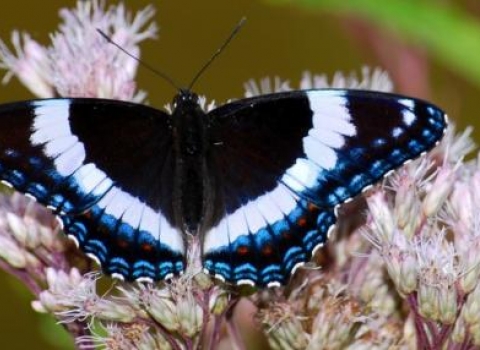
Board 3: The White Admiral
The White Admiral is a medium-sized butterfly found in shady woodlands, clearings and rides in late summer. Adults are often found on the flowers of Bramble and lay their eggs on honeysuckle leaves, which the caterpillars feed on. Find out more here
How to identify: The White Admiral is black above and gingery-brown below, with white patches on the wings.
Did you know? Adults are often found on the flowers of Bramble and lay their eggs on honeysuckle leaves, which the caterpillars feed on.

Board 4:The Spider-Hunting Wasp
The rare spider-hunting wasp, seen between May and September immobilises its prey before laying its larvee in them. Find out more
How to identify: A medium-sized red and black species, females have a tarsal comb to help burrowing.
Did you know? The spider-hunting warp is very rare, and has never been recorded in Scotland or Ireland!
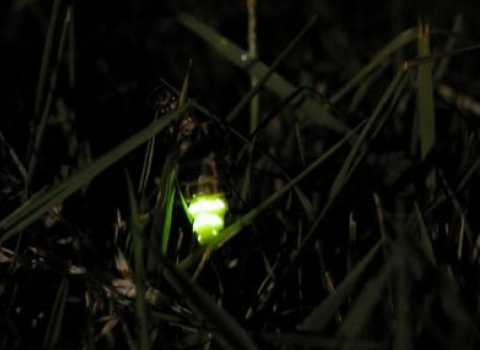
Board 5: The Glow Worm
The glow worm isn't actually a worm, its a beetle! Glow-worms are most often found as larvae, which live under rocks on chalky grassland and feed on slugs and snails. Find out more
How to identify: The nightly glow of a female Glow-worm is unmistakeable. The male is a light brown, typical beetle. The larva is greyish-brown with yellowy-orange triangular markings at the side of each segment. The female is similar in appearance to the larva.
Did you know? Females are famous for emitting a greeny-orange light from their bottoms at night. They climb up plant stems and glow in order to attract males, who have large, photosensitive eyes - perfect for scanning vegetation at night. The larvae can also emit light, and so can the eggs.
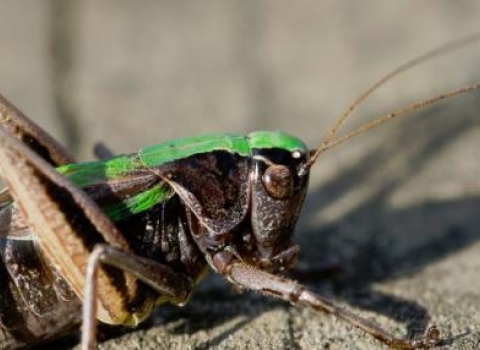
Board 6: The Bog Bush Cricket
The Bog Bush Cricket's long hind legs enable it to jump really long distances. Found in our rare peat bogs, they feed on heather and heath. Find out more
How to identify: Bright green underneath, brown along the sides and either brown or green on the back.
Did you know: Layed eggs overwinter until the following spring.
